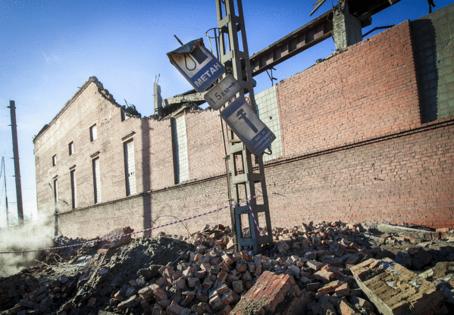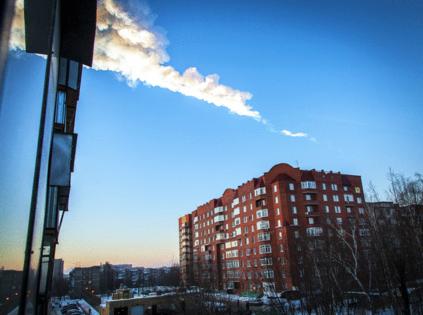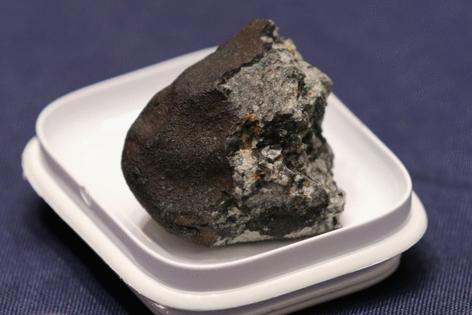These researchers are charged with defending the planet against asteroids
Published in Science & Technology News
In December, astronomers identified that the asteroid YR4 had a small but not insignificant chance of striking Earth in 2032, a scenario that experts postulated could have more explosive potential than 500 Hiroshima nuclear bombs.
Researchers reclassified YR4 as a non-threat in February, but the interim period when the asteroid was considered a threat, was the first time that the International Asteroid Warning Network had been activated to respond to a threat since its formation in 2014.
“The fact is that humanity does have a system that has been put in place in the last decade, essentially, and it worked for YR4,” said Danica Remy, president of the Mill Valley-based B612 Foundation, a nonprofit focused on identifying near-Earth objects (NEOs) that pose a threat to humanity.
The global apparatus of researchers and cosmologists had formed in 2013 in the wake of an exploding meteor over Chelyabinsk, Russia, that shattered glass for miles around.
“We did not see that one coming,” said Katie Kumamoto, a researcher at Lawrence Livermore National Laboratory, about the 2013 Chelyabinsk meteor. “There was no warning until there was actually a fireball in the sky being caught on all of those dashboard cameras on people’s cars. I think that was a big wake-up call.”
Though astronomers have known about the threat posed by NEOs since the 1970s, efforts to catalogue potentially dangerous asteroids and meteors have only seriously materialized in the past decade, according to researchers from LLNL, the Marin County-based Asteroid Institute and NASA’s Planetary Defense Coordination Office.
The Planetary Defense Coordination Office has identified 873 NEOs larger than one kilometer, a size that could be “a disaster of the scale of anything we’ve seen,” according to Planetary Defense Officer Emeritus Lindley Johnson, who established the office in 2016. Another 11,266 NEOs have been identified that are large enough to wipe out entire cities if they landed in a metropolitan area, Johnson added. Johnson said NASA’s catalogue has now identified more than 95% of NEOs that pose a threat to Earth.
“Even though we now feel we’ve got a good handle on the population of large near-Earth asteroids, we’re still working on understanding what the smaller population is,” Johnson said. “We now have this tasking from NASA to find everything that’s larger than 140 meters in size.”
The last major asteroid impact on Earth was the Tunguska Event in 1908 in Siberia, where an asteroid, estimated to be between 50-100 meters in diameter, exploded in the Earth’s atmosphere and flattened 2,000 square kilometers of forest. Asteroids of that size are estimated to strike Earth once every 200-300 years, while asteroids larger than one kilometer strike Earth once every 500,000 years on average, according to the University of Arizona.
The International Asteroid Warning System’s researchers, recognizing that an asteroid impact is an inevitability rather than a possibility, have worked to develop numerous strategies to deploy against an asteroid whose trajectory is aligned with Earth. Some of these strategies have already been tested.
On Sept. 26, 2022, NASA successfully redirected the asteroid Dimorphos as part of its Double Asteroid Redirection Test (DART) using the strategy of a kinetic impactor — a fancy way of saying scientists crashed into an asteroid and changed its trajectory. The DART mission was a huge step in the planetary defense field, proving that the kinetic impactor could be utilized in the future.
“Just changing the speed at which something is moving in orbit, that changes the orbit forever in the future,” Johnson said. “The orbital shape, size of the orbit, and where it’s going is all determined by the orbital velocity around the sun.”
Like a real-world game of Galaga, the kinetic impactor strategy works for smaller space rocks, however, other larger asteroids require more intense interventions. Asteroid Institute co-founder Ed Lu and astronaut Stanley G. Love invented the “gravity tractor” method, where, if given enough time, a spacecraft could be placed near an asteroid’s gravitational field, “fine-tuning” its orbital trajectory safely away from Earth, Remy said.
But what if the asteroid is too large for a kinetic impactor and scientists are too late to identify an impending impact? At Lawrence Livermore National Laboratory, Kumamoto and other researchers are working on a solution: nuclear deflection. For this strategy, a nuclear explosive device would be triggered near an asteroid, sending it off its orbital path and ablating material from its surface.
“Because there’s just so much energy in a nuclear explosive device, we would be able to apply a much bigger push to the asteroid than we could get from a kinetic impactor,” Kumamoto said about the “nuclear option” of planetary defense. “We don’t understand that one as well as we understand option number one and option number two.”
Part of the reason for Kumamoto and other LLNL researchers’ limited understanding of nuclear deflection is that international law prevents them. The Outer Space Treaty, approved by the United Nations in 1967, prohibits nuclear weapons in space and limits nations from testing military weapons on any celestial body. Space might be the final frontier, but no nation holds claim to it.
In 2014, in the wake of the Chelyabinsk meteor, the United Nations brought greater focus to asteroid threats and planetary defense by sanctioning “International Asteroid Day” on June 30, a commemoration of the Tunguska Event in 1908. Originally founded by Remy’s B612 Foundation, along with physicist Stephen Hawking, astronaut Rusty Schweickart and Queen guitarist Brian May in 2014, Asteroid Day is a call to action to keep humanity safe from what lies beyond our atmosphere — because in a world of natural disasters, one of the most devastating phenomena comes from space.
“Unlike a hurricane or a tsunami or an earthquake or super volcano, there’s really absolutely nothing we can do about those right now,” Remy said. “Whereas with an asteroid impact, there are deflection options, and the work that we’re doing is really important because warning time is everything.”
©2025 MediaNews Group, Inc. Visit at mercurynews.com. Distributed by Tribune Content Agency, LLC.












Comments